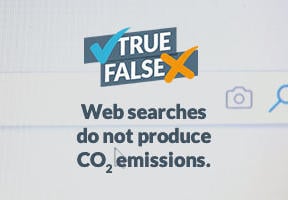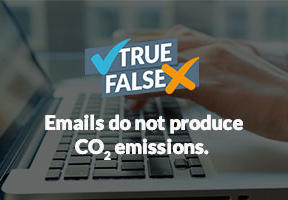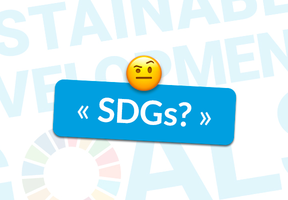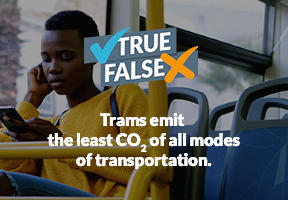Climate: The IPCC’s 1.5°C Scenario Report
10 min read
The Paris Climate Agreement, signed at COP21 in December 2015, called for the increase in the planet’s average temperature to be contained “well below 2°C” by 2100 and even for efforts to limit it to 1.5°C. Experts from the were tasked by COP21 with analyzing the possible consequences of the 1.5°C scenario, publishing their report in October 2018. Read on for some of the key findings1.

© TORSTEN BLACKWOOD / AFP - Global warming has the effect of accelerating the melting of ice at the poles. In the photo, an iceberg stands out from the ice on the Knox Coast in the Australian part of Antarctica.
Rate of warming: The average global temperature has already risen by around 1°C since preindustrial times and is now advancing by around 0.2°C per decade. At this rate, could reach 1.5°C between 2030 and 2052 and 3°C by 2100.
Heatwaves: As global warming increases, heatwaves will become more intense. In the 1.5°C scenario, heatwaves in temperate countries will be 3°C hotter than they are today, as well as lasting longer.
Torrential rain: If global warming exceeds 1.5°C, torrential rains typical to tropical areas will also occur in the higher latitudes of the northern hemisphere (North America, Northern Europe and East Asia).
Sea levels: An average global temperature increase of 1.5°C would cause sea levels to rise by 26 to 77 centimeters, depending on the location. A rise of 2°C would add another 10 centimeters. It may not sound like much, but it would put at least 10 million more people at risk.
Arctic thaw: Under the 1.5°C scenario, the Arctic Ocean at the North Pole would fully thaw once a century. If global warming reaches 2°C, this could even happen once a decade, with consequences for sea levels.
Fishing: Annual fish catch could go down by 1.5 million metric tons in the 1.5°C scenario and more than 3 million metric tons if global temperatures increase by 2°C, with schools of fish moving up to cooler waters. Fishing is essential to the survival of hundreds of millions of people in tropical and equatorial countries.
Water and farming: A rise of 2°C rather than 1.5°C in global temperatures would intensify the full spectrum of risks in the world’s poorest countries, particularly with regard to access to drinking water, crop yields and resistance to epidemics.
thaw: Global warming of 1.5°C would cause 1.5 million square kilometers of permafrost, or ground that has been frozen for a solid length of time, to melt, with the estimate rising to 2.5 million square kilometers at 2°C of global warming. When permafrost thaws, it releases additional greenhouse gases.
Coral reefs: In the 1.5°C scenario, the amount of coral on the planet is expected to decrease by at least 70%. If global warming exceeds 1.5°C, fully 99% of coral would disappear.
Solutions
Reducing emissions: To limit global warming to below 1.5°C, anthropogenic (man-made) CO2 emissions would need to be reduced by 45% from 2010 levels by 2030, with carbon neutrality – that is, offsetting all the CO2 released into the atmosphere – a necessity for 2050.
Reducing use of fossil fuels: is expected to account for less than 2% of production in 2050 (compared with 38% in 2017), with renewable energies representing between 70% and 85% of the generation mix.
Funding the transitions: Limiting global warming to 1.5°C will require annual global spending of $2,400 billion by 2035. This would be a big investment, but far below the potential cost if no significant progress is made by 2030.
Are Heatwaves and Severe Storms the Result of Global Warming ?
A number of climate research institutes have joined forces to study extreme events, such as severe storms, torrential rain, heatwaves, cold snaps and droughts, and determine each time if they are related to the increase in average global temperatures.
More than 25 events have been studied since 2015 on the World Weather Attribution (WWA) platform. Scientists have identified several trends that point to extreme events becoming more “probable” as global temperatures rise:
- Higher average temperatures lead to more intense heatwaves and less pronounced cold snaps.
- Temperatures recorded during the winter of 2017-2018 in North America and Southeastern Europe (Italy, the Balkans and Turkey) were around 2°C higher than during previous cold snaps.
- The July 2018 heatwave in Scandinavia, which was felt throughout Europe, was made “twice as likely” by .
- The impact of global warming on the severity of storms is less clear. The WWA did not identify any significant impact on the two storms that hit Europe in January 2018, Storm Friederike in North-Eastern Europe and Storm Eleanor (the most deadly in France since Xynthia in 2010). However, rising sea levels has tended to increase storm severity.
Sources :
- The 400-page report was drawn up by an IPCC working group co-chaired by French researcher Valérie Masson-Delmotte.
- The Industrial Revolution began in the 18th century, but climatologists use 1850-1900 as the reference period.
- The WWA brings together the Environmental Change Institute, University of Oxford (ECI), the Royal Netherlands Meteorological Institute (KNMI), the Laboratoire des Sciences du Climat et de l’Environnement (LSCE), Princeton University, the National Center for Atmospheric Research (NCAR) and the Red Cross/Red Crescent Climate Centre (the Climate Centre).






















